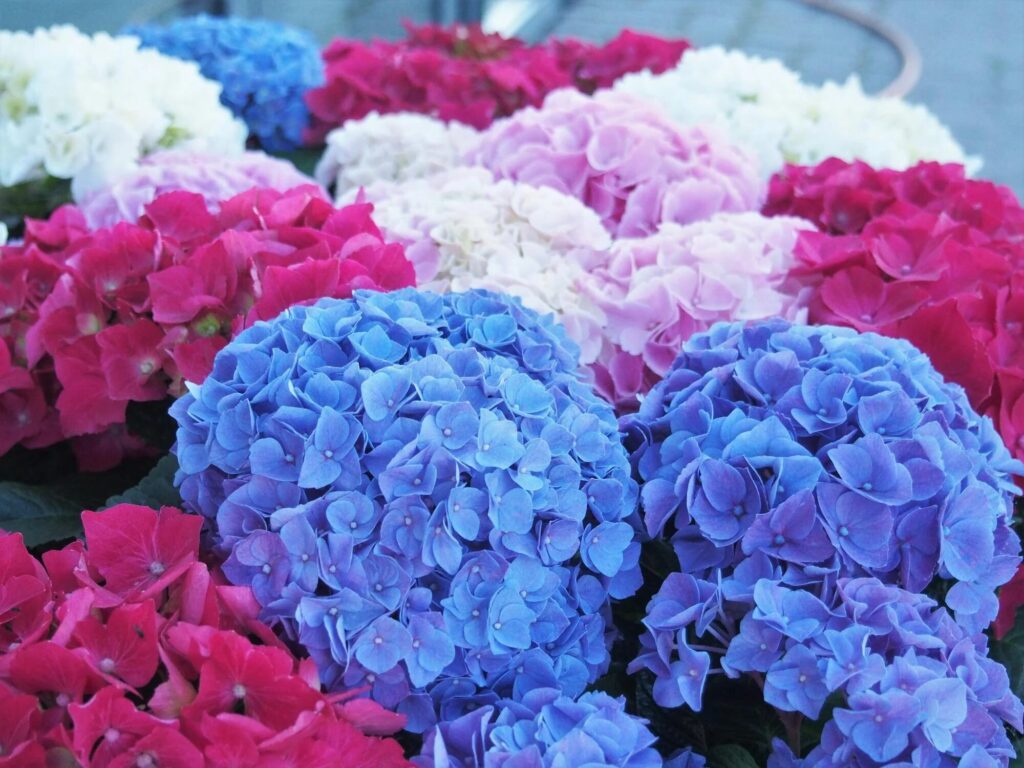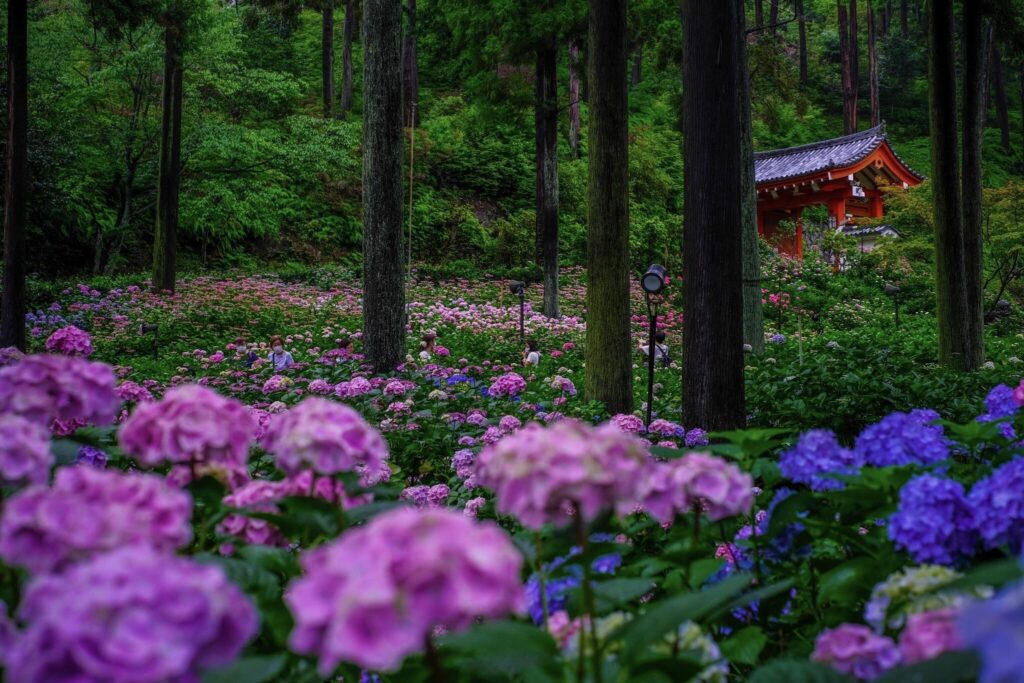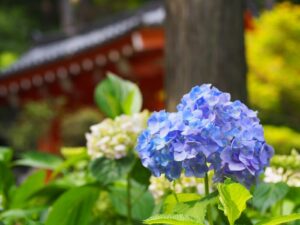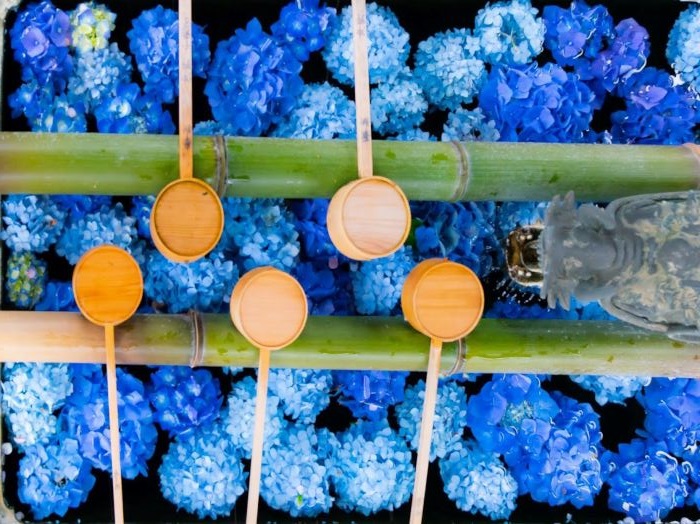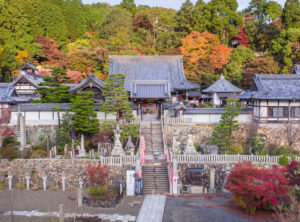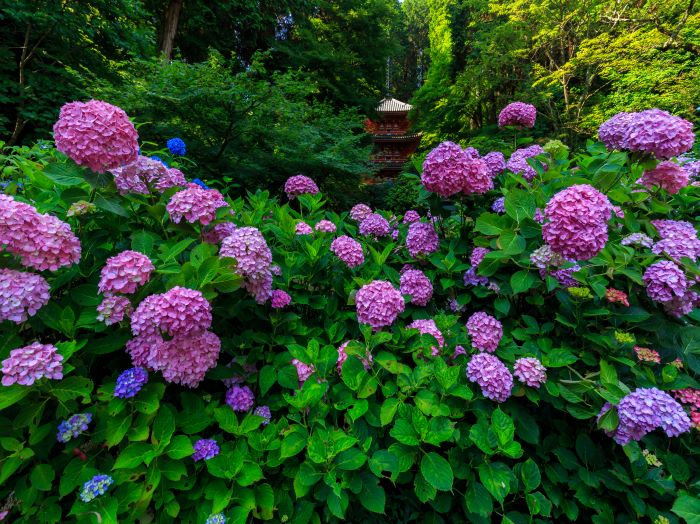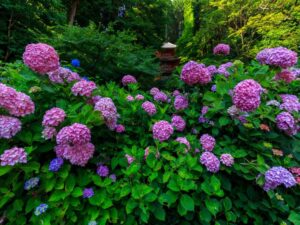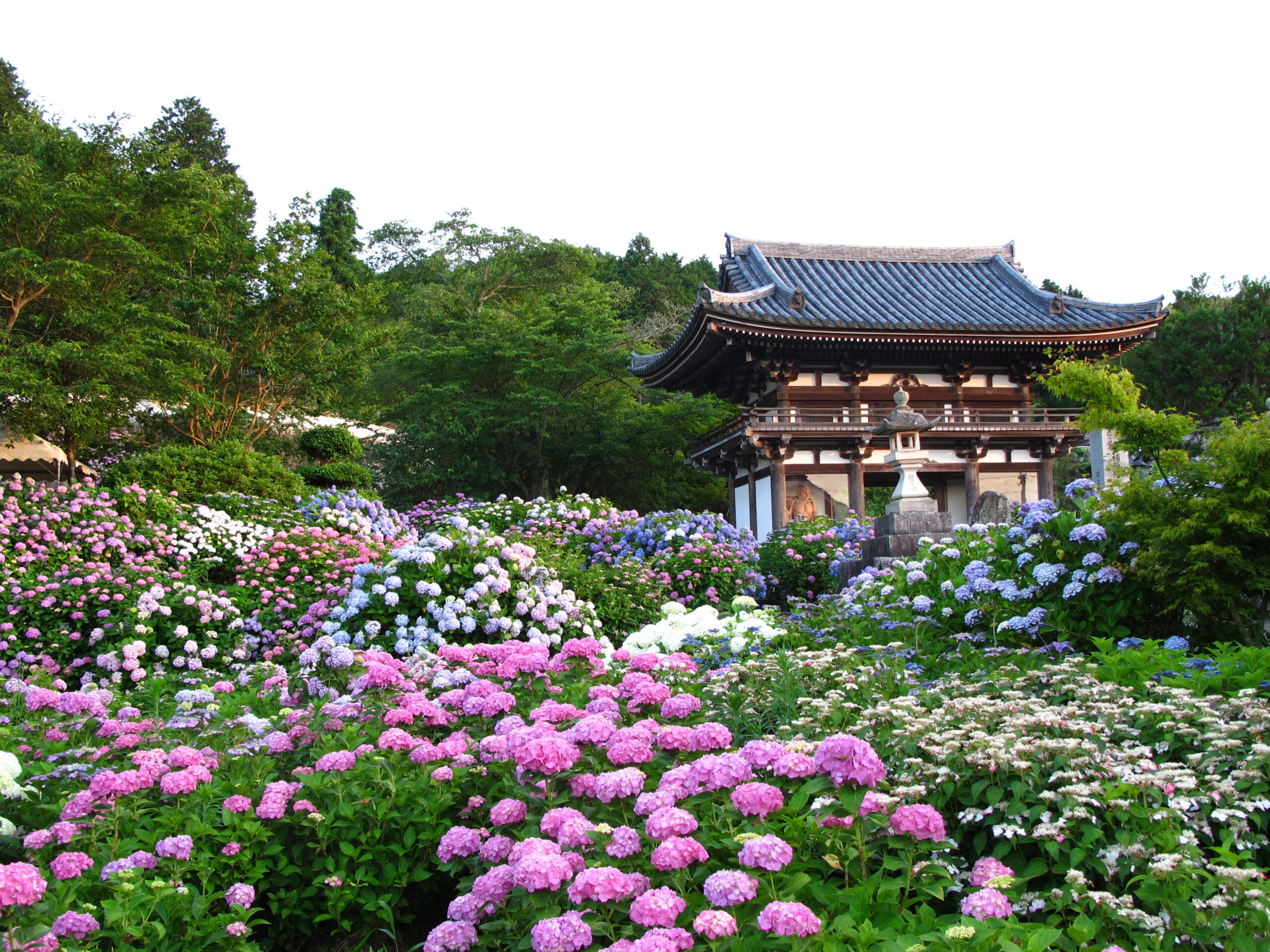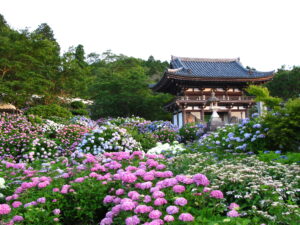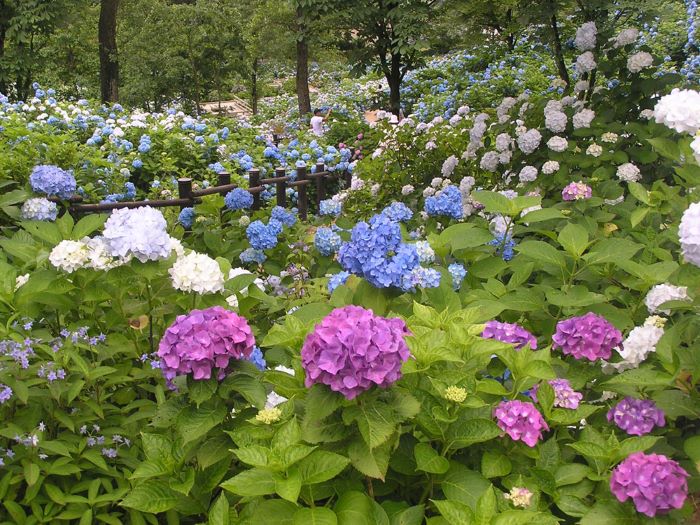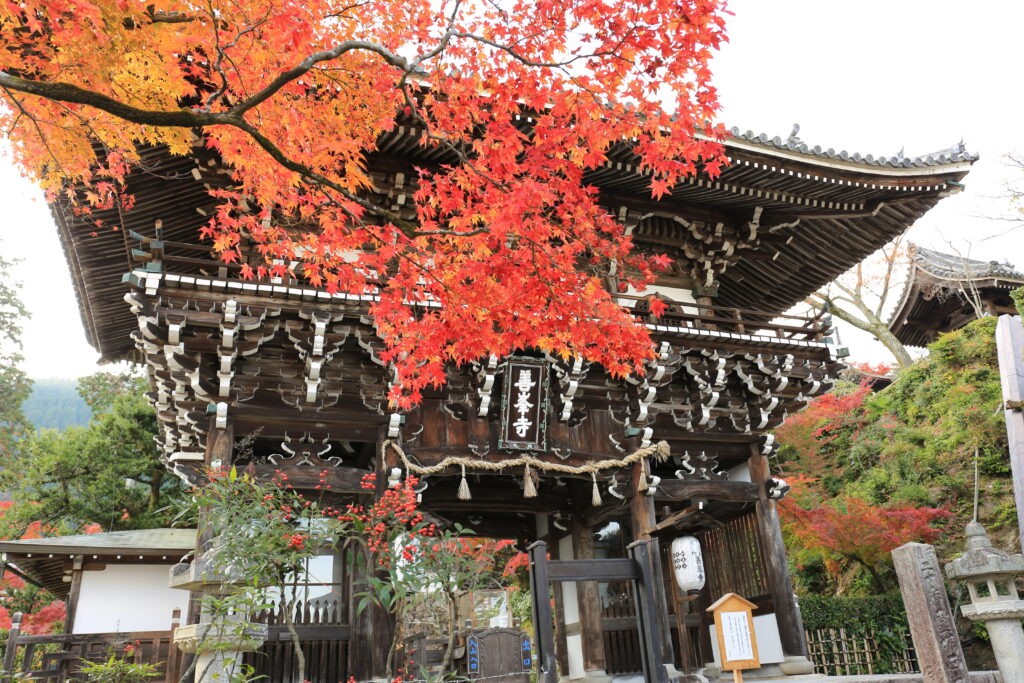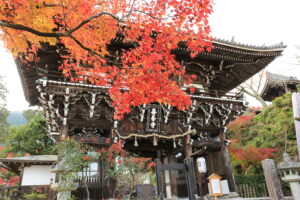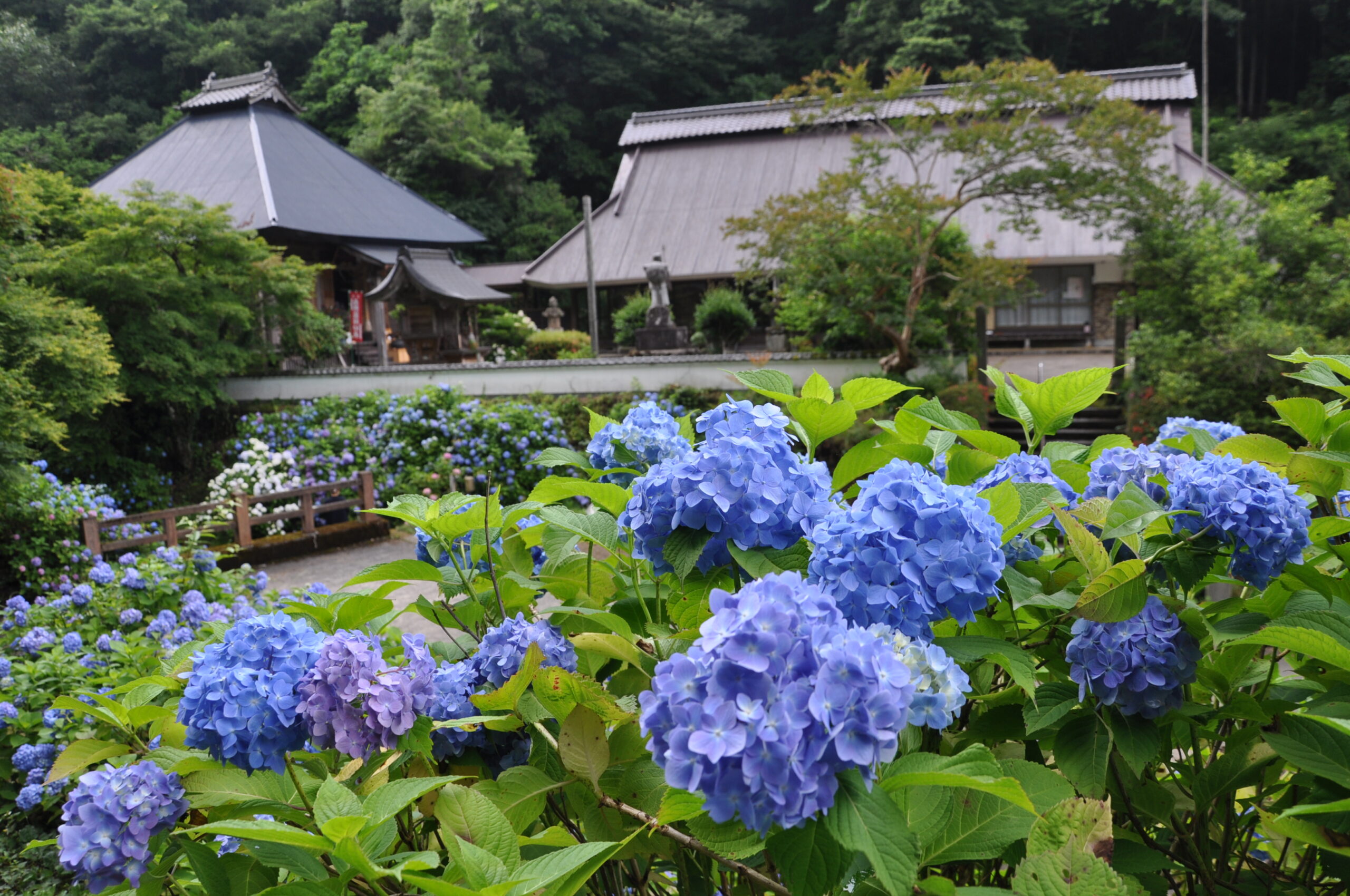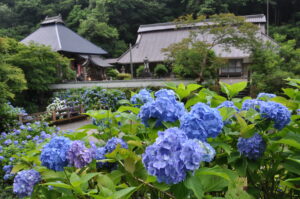Gansen-ji Temple, located in the southernmost part of Kyoto Tea Country, is about an hour away from Kyoto City by train or car. This ancient temple, whose name translates to “Rock Boat Temple,” offers a peaceful and intimate setting for hydrangea viewing. The main gate features a distinctive boat-shaped rock, which, according to legend, was used by priests for religious rituals.
This lesser-known temple is surrounded by dense forest, creating a secluded atmosphere that feels like a secret garden. The temple grounds are home to many kinds of flora, such as hydrangeas, crape myrtle flowers, water lilies, and Japanese plum and cherry blossom trees. During the height of the rainy season, vibrant pink, blue, and purple hydrangeas line the gravel paths and add a touch of color to the rustic landscape.
Gansen-ji is especially beautiful after a light rain, when the flowers glisten and the air is filled with the scent of fresh blooms. For those planning a longer visit, there’s also the chance to see the hidden Buddha statue, which is available for public viewing from the beginning of April to the end of May. It’s an ideal spot for those looking to escape the busier tourist locations. Add Gansen-ji Temple to your itinerary and experience its tranquility and stunning hydrangeas.
Hours:
March – November 8:30 a.m. – 5:00 p.m. (Reception closes at 4:45 p.m.)
December – February 9:00 a.m. – 4:00 p.m. (Reception closes at 3:45 p.m.)
Access:
JR Nara Line, Miyakoji Rapid, JR Yamato Line, Rapid (Kyoto – Kizu – Kamo) about. 60 min.
Gansen-ji Temple
Gansen-ji Temple is an ancient Buddhist temple located in Kamo-cho, part of Kizugawa City in the southernmost part of Kyoto Prefecture. Thought to have been built in 729, the name “Gansen-ji” translat …
